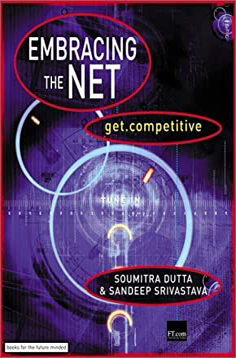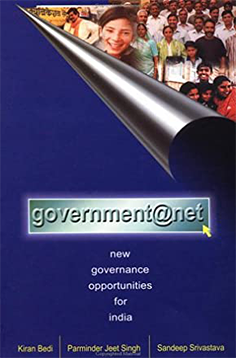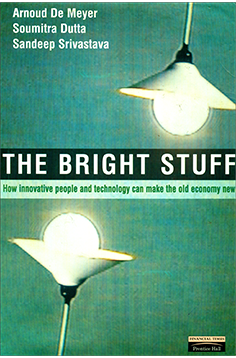The Liberal Schools will be knowledge-society schools, the ‘4IR schools,’ with one curricular goal – routinize rigourous and polymathic thinking. There would be no teaching, all adults would be peers, but, the best qualified learners! And, the best paid too; also because, there would just be one peer per ‘subject’. Obviously, The Liberal Schools would be the most expensive schools in the world. The right education, the best fit for the times, is truly priceless, and much more for the most endowed in the society. The best investments parents can make on education. And, it is wholly by design that The Liberal Schools will work with the most privileged families across the world.
The Liberal Schools will be essentially 5-year formal education, instead of the current 12 years, equivalent of Grades IV – VIII years. The entry qualification in Grade IV would just be reading ability; for reading would be the first source of exploration of all of academics, followed by conversation, experiments, observations, experiences. Children may also enrolled from Grade I, but they would spend the years till Grade IV on reading, play, sports, play, dance, art, music, etc. By the end of Grade VIII, all children would have transacted up to the best of the current Grade XII curricula. They are expected to read nearly 500 books, on top of the our private ‘A-Z’, domain-threaded curricula, world’s first of its kind. While ‘The Liberal School by Saloni and Sandeep’ is already open for enrolment, the license and start of The Liberal School will follow new entrepreneurial ventures in education. We hope to have the first such school ready to welcome families by April, 2025, somewhere in the world.
Please do write to us, in case you are passionate about education, and awaiting the next-gen school model, or the unschool model. To me, home-schooling communities will immeasurably benefit from turning into Liberal Schools.












 The common thread of what affects quality, running through the four years, are: the school leadership’s ‘definition and expectations of quality’, the language competence of teachers in the academic language for all subjects, the domain competence of the heads of various subject departments, close routine involvement of parents, and language competence of students.
The consistently important input factors for quality include the frequency and (easy) actionability of assessment reports to parents, continuous teacher motivation development, better books and learning materials, career guidance resources and processes and ‘happy socialisation’ in primary school years.
The common thread of what affects quality, running through the four years, are: the school leadership’s ‘definition and expectations of quality’, the language competence of teachers in the academic language for all subjects, the domain competence of the heads of various subject departments, close routine involvement of parents, and language competence of students.
The consistently important input factors for quality include the frequency and (easy) actionability of assessment reports to parents, continuous teacher motivation development, better books and learning materials, career guidance resources and processes and ‘happy socialisation’ in primary school years. This paper is the analysis of ongoing evaluation of our successful strategies in school management by classifying schools into 9 distinct categories and tailoring optimal leadership performance role definitions/models for each. The 9 school categories emerge essentially from the 3 stages of progressive growth for schools (Effective, Successful, Living) for each of the 3 types of schools (Teacher-centered, Parent-centered, and Student-centered). Effective schools are academic focused, successful schools are overall-development focused, and Living schools are next-gen, ‘boundary-less’ schools.
This paper is the analysis of ongoing evaluation of our successful strategies in school management by classifying schools into 9 distinct categories and tailoring optimal leadership performance role definitions/models for each. The 9 school categories emerge essentially from the 3 stages of progressive growth for schools (Effective, Successful, Living) for each of the 3 types of schools (Teacher-centered, Parent-centered, and Student-centered). Effective schools are academic focused, successful schools are overall-development focused, and Living schools are next-gen, ‘boundary-less’ schools.
 This paper, clued to research and rooted in on-ground school development strategies, proposes school leadership standards and competencies that will assuredly propel school’s equity and quality goals. However, standards and competencies are all-encompassing, and can’t be developed and applied universally. In this paper standards are mainly focused on making student learning as the end-all mission, whole-person development as core value, educating talented and gifted, multi-dimensional inclusion, teacher-student relationships, micro-curricular organization, parent and community integration, leader’s effectiveness policies, ethical and operational norms, whole-school community and distributed leadership roles.
This paper, clued to research and rooted in on-ground school development strategies, proposes school leadership standards and competencies that will assuredly propel school’s equity and quality goals. However, standards and competencies are all-encompassing, and can’t be developed and applied universally. In this paper standards are mainly focused on making student learning as the end-all mission, whole-person development as core value, educating talented and gifted, multi-dimensional inclusion, teacher-student relationships, micro-curricular organization, parent and community integration, leader’s effectiveness policies, ethical and operational norms, whole-school community and distributed leadership roles.
 Very many factors influence student outcomes and the quality of school leadership tops the list by a mile. This paper is an ongoing, 12-year action research on exploring diverse models of school leadership in my capacity as a leading school’s co-founder, in India. Literature review on the subject is rich and diverse, but the verdict is still wide open; from Drysdale’s model, ISSPP’s eight models, to tri-model (transformational, instructional, distributive), but none of them are independently applicable. However, talking of ‘performance’, the literature can be divided into models that help create effective schools, versus successful schools.
Very many factors influence student outcomes and the quality of school leadership tops the list by a mile. This paper is an ongoing, 12-year action research on exploring diverse models of school leadership in my capacity as a leading school’s co-founder, in India. Literature review on the subject is rich and diverse, but the verdict is still wide open; from Drysdale’s model, ISSPP’s eight models, to tri-model (transformational, instructional, distributive), but none of them are independently applicable. However, talking of ‘performance’, the literature can be divided into models that help create effective schools, versus successful schools.


